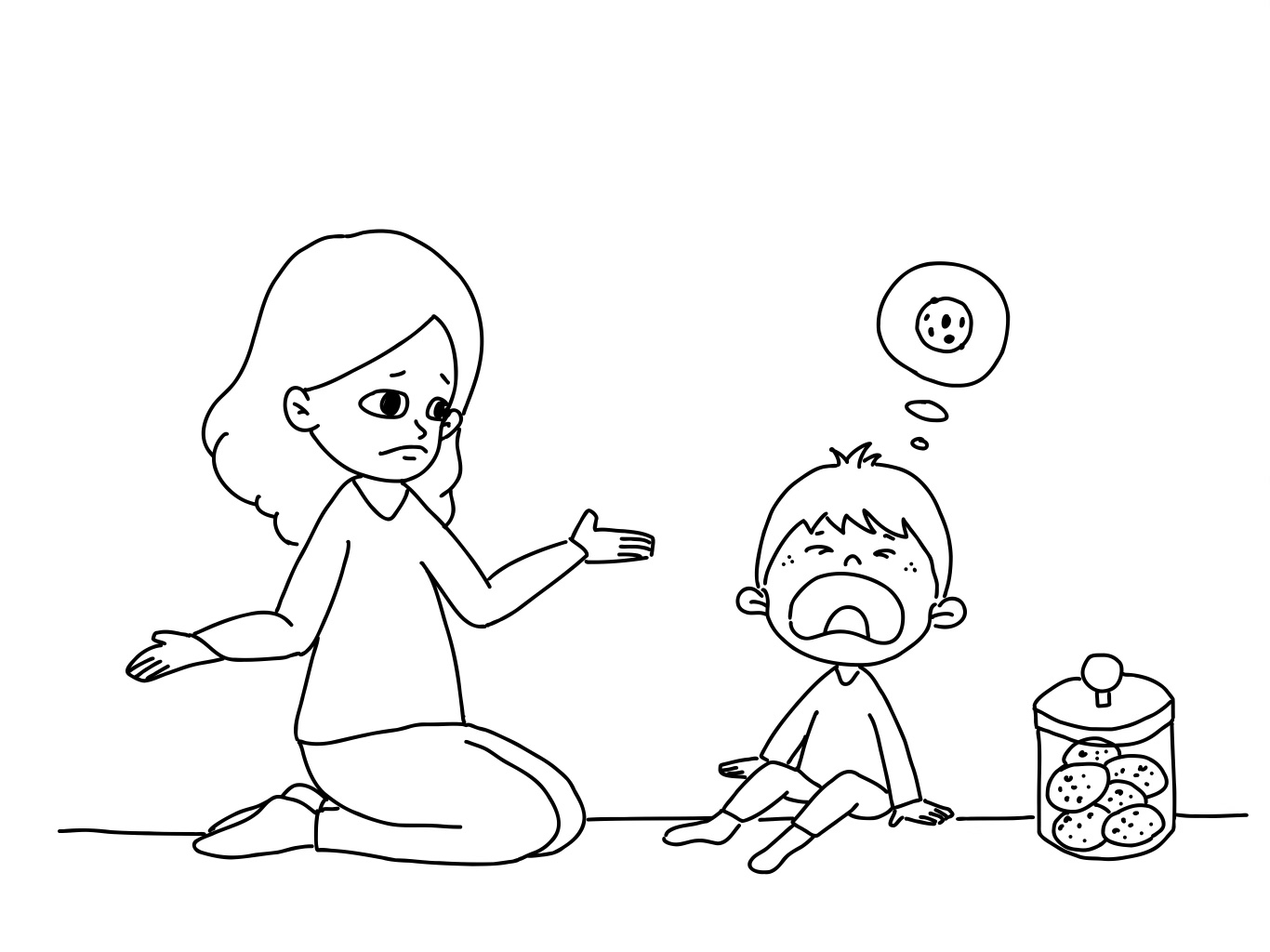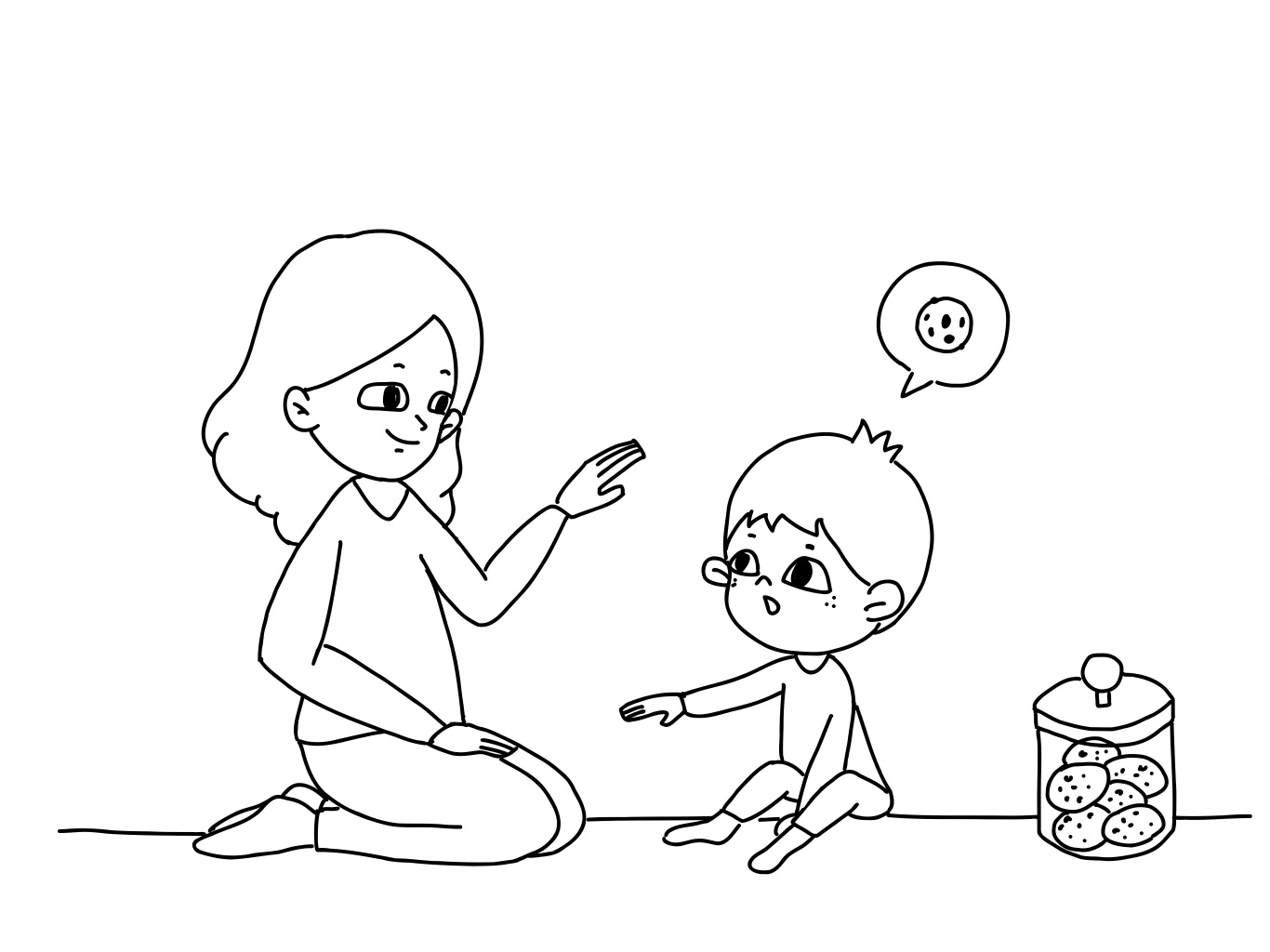Sometimes, kids get what they want in not-so-great ways. They whine, they cry, and they grab things out of our hands.
We all have tough days and forget our manners. But for some kids, it’s not just a tough day.
Happy people of all ages can ask for what they want. And they can tolerate when the answer is “no” or “not now.” Crying and hitting certainly work sometimes, but friendly requesting clears the path toward friendships and fun.
If your child struggles, don’t worry. Social skills are skills just like any other. And any skill can be taught, practiced, and mastered!
Illustration by Xiaozhu An
Happy kids make friendly requests
Requesting isn’t just about asking a question. In fact, we make requests without any words at all. We move close to people, touch them, make eye contact, point, look away, or smile to get what we want.
Your best friend might know you want a hug just by the expression on your face. But if she’s not getting it, you need to know how to say “Hug me!”
In general, to make a request, we
(1) Look at the other person’s face and eyes
(2) Interpret the other person’s expressions and body language
(3) Use this information to ask the right question (or decide it’s not the time to ask)
Common challenges
We send and receive a lot of information through our eye gaze and facial expressions. This comes naturally to most people. But children with social challenges may struggle to attend and respond to these cues.
Even if it’s hard, lay a foundation for friendship and fun by teaching your child to approach you and look at your face. Your face will give her clues about your mood. Your face will tell her whether you are preoccupied or available to help.
Continue to build your foundation by teaching and practicing friendly words. For an 18 month-old, this might be just a single word like “cookie.” For a school-age child, it might look more like “Excuse me? Hey Mom? May I have some of the mini Oreos we got at Costco? Please?”
If your child has developmental delays, resist the urge to skip ahead to what you think is “age appropriate.” If your adult child needs prompting to say single words, do not require her to use full sentences to get what she wants.
The first priority is for your child to communicate. The second priority is for your child to tolerate when requests are not granted. Do not skip the first priority. Skipping steps leads to frustration for everyone involved. 
Illustration by Xiaozhu An
Why is it important?
If your child does not make friendly requests, it will be hard for other people to understand what she wants. And it will be even harder for her to gain related skills in empathy and friendship.
A child who cannot request will become frustrated. She may cry or grab to get what she wants instead. Other children may begin to avoid her, and you may find yourself walking on eggshells at home.
Test it out
Observe what your child does when she needs your help or wants to play with you.
- Avoids looking at your face
- Screams or cries more than she speaks or gestures
- Hits, kicks, or bites to get what she wants
- Moves towards you if you are far away
- Shifts her gaze to meet yours
- Speaks or gently touches you to get your attention
What if this skill is missing?
No matter your child’s age, if she has trouble requesting, start simple. Our next post, Teaching Friendly Requests, covers how to teach the skill step by step!



Leave a Reply